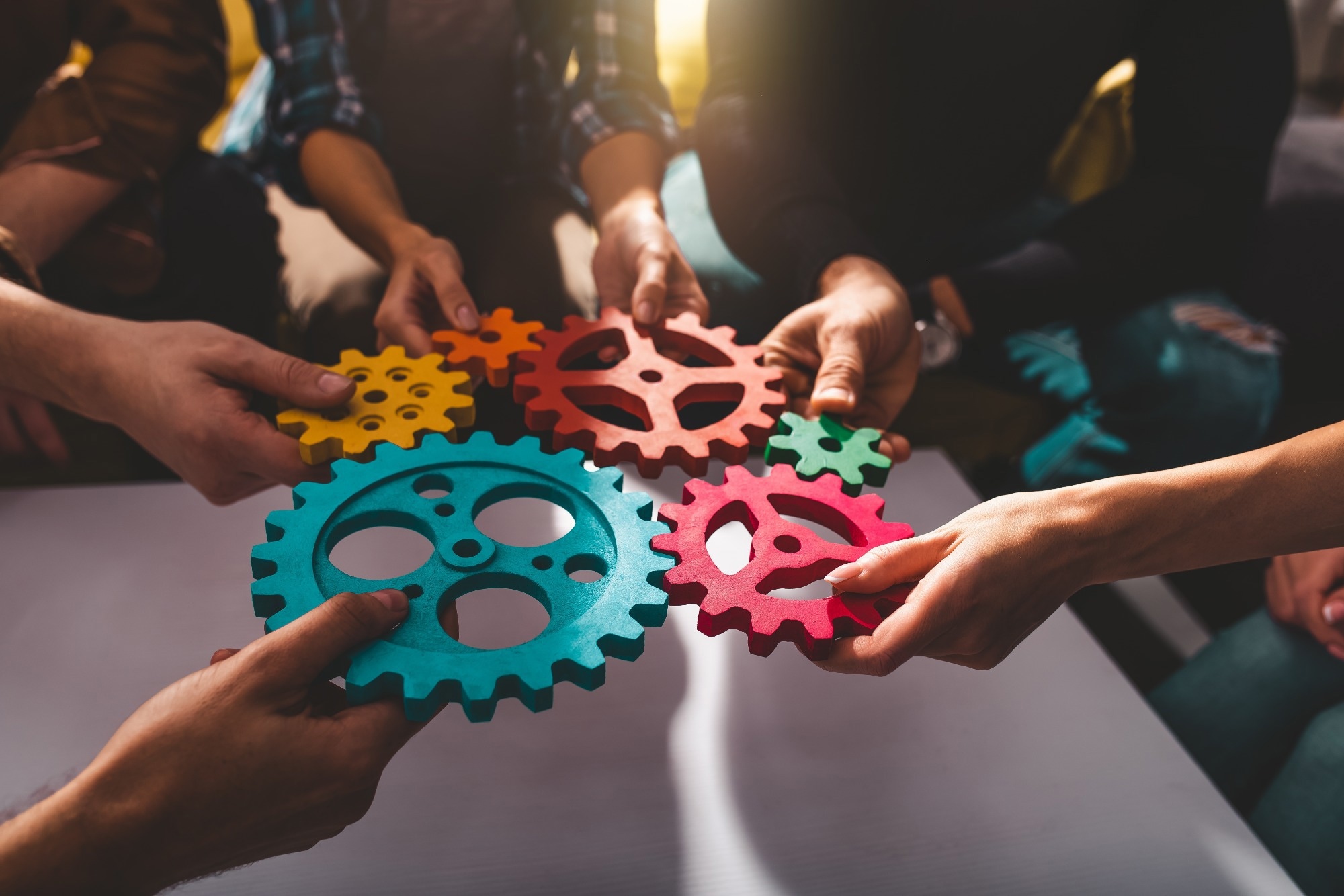Preventing Antimicrobial Resistance Together: Aligning WAAW’s Theme with WHO’s Objectives and Priorities

As the world grapples with the rising threat of antimicrobial resistance (AMR), the World Health Organization (WHO) plays a pivotal role in spearheading global efforts to combat this alarming trend. In this insightful interview marking World Antimicrobial Awareness Week (WAAW) 2023, Kitty van Weezenbeek, Director of Surveillance, Prevention and Control of AMR in the WHO AMR division, delves into the critical challenges and progress in the fight against AMR, emphasizing the importance of a people-centered approach, a One Health response, and collaboration as essential pillars in effectively addressing this global health concern.
Aligning WAAW’s Theme with WHO’s Objectives and Priorities
Interviewer: World AMR Awareness Week (WAAW) commences on the 18th of November; this year’s theme is “Preventing Antimicrobial Resistance Together.” How does this theme align with the WHO’s overarching objectives and priorities?
Kitty van Weezenbeek: The theme “Preventing Antimicrobial Resistance Together” resonates deeply with WHO’s overarching objectives and priorities in addressing AMR. The misuse and overuse of antimicrobials across various sectors, including human health, animal agriculture, and the environment, are primary drivers of AMR. To effectively combat this growing threat, it is imperative to foster a collective effort that promotes prudent and appropriate antimicrobial use across all sectors while simultaneously implementing robust preventive measures to reduce the transmission of infections.
In line with this approach, WHO advocates for a comprehensive One Health response to AMR, fostering close collaboration with other Quadripartite organizations, namely the Food and Agriculture Organization of the United Nations (FAO), the United Nations Environment Program (UNEP), and the World Organisation for Animal Health (WOAH). This collaborative approach ensures that AMR is tackled holistically, addressing its interconnected dimensions across human, animal, and environmental health.
Within the human health sector, WHO emphasizes shifting the focus from a narrow focus on individual pathogens, antimicrobial drugs, and hospital settings to a broader, more comprehensive strategy that encompasses all levels of the healthcare system. This strategy aims to ensure that patients have access to antibiotics when they genuinely need them while preventing inappropriate use, particularly for viral infections like the common cold.
Educating both healthcare providers and the public about the appropriate use of antibiotics is crucial in this endeavor. WAAW plays a critical role in raising awareness and imparting essential knowledge on proper antibiotic use, emphasizing that reducing infection rates through preventive measures like strengthening water, sanitation, and hygiene (WASH) practices, vaccination programs, and infection prevention and control (IPC) initiatives is paramount in minimizing the need for antimicrobials and curbing AMR.
Moreover, integrating AMR prevention into other healthcare strengthening initiatives, such as primary healthcare (PHC), universal health coverage (UHC), and pandemic preparedness and response, is essential for a comprehensive and effective approach. Adequately resourcing each sector to prioritize, cost, implement, and monitor their specific AMR action plans is also crucial for successful implementation.
WHO’s Multifaceted Approach to Tackling AMR
WHO has adopted a multifaceted approach to combat AMR, encompassing the following key areas:
Surveillance and Monitoring: Establishing robust surveillance systems to track the prevalence and trends of AMR is crucial for informing effective interventions and policies.
Prevention and Infection Control: Preventing infections in the first place is essential to reduce the need for antimicrobials and curb the spread of resistance. This involves promoting good hygiene practices, improving sanitation, and implementing effective infection prevention and control measures in healthcare settings.
Promotion of Prudent Antibiotic Use: Ensuring the appropriate use of antimicrobials is critical to slowing the development of resistance. This entails providing healthcare workers with the necessary training and guidelines to prescribe antibiotics judiciously and educating patients about the proper use of these drugs.
Research and Development: Investing in research and development is essential to discover new antimicrobials and alternative therapies to treat infections. Additionally, research is crucial for understanding the mechanisms of resistance and developing effective prevention and control strategies.
Collaboration and Partnerships: Addressing AMR requires a multi-sectoral approach that brings together governments, healthcare institutions, academia, industry, and civil society. Fostering collaboration and partnerships is essential for sharing knowledge, resources, and expertise to combat this global threat.
WAAW’s Role in Raising Awareness and Promoting Action
World Antimicrobial Awareness Week (WAAW) serves as a critical platform to raise awareness about AMR and its potential consequences, emphasizing the importance of collective action to combat this growing threat.
The WHO’s People-Centered Core Package of 13 Interventions for Addressing Antimicrobial Resistance (AMR)
The World Health Organization (WHO) recently released a core package of 13 interventions to support national action plans on antimicrobial resistance (AMR). These interventions are designed to address AMR in a programmatic manner that puts people, their needs, and equitable access to health services at the center of the AMR response.
The 13 core interventions are:
- Prevent infections through hygiene, sanitation, and vaccination
- Promote appropriate use of antibiotics in humans and animals
- Improve access to essential medicines, including antibiotics
- Strengthen laboratory capacity for diagnosis of infections and antimicrobial resistance
- Implement effective infection prevention and control (IPC) measures
- Raise awareness about AMR among the public and healthcare workers
- Develop and implement national AMR stewardship programs
- Strengthen surveillance of AMR and antimicrobial use
- Promote research and development of new antimicrobials and alternative therapies
- Support implementation of One Health national action plans on AMR
- Enhance governance and coordination of AMR activities
- Monitor and evaluate the impact of AMR interventions
- Build capacity to implement the people-centered approach to AMR
The four pillars of the people-centered approach to AMR are:
- Prevention of infections
- Access to essential health services
- Timely, accurate diagnosis
- Appropriate, quality-assured treatment
The two foundational steps of the people-centered approach to AMR are:
- Effective governance, awareness, and education
- Strategic information through surveillance and research
Why is implementation of national AMR action plans often fragmented and siloed?
There are several reasons why implementation of national AMR action plans is often fragmented and siloed. These include:
- Lack of political commitment and sector-specific AMR leadership
- Lack of recognition of the interdependency of different interventions
- Implementation of interventions as isolated thematic interventions rather than as a comprehensive programmatic approach
- Lack of donor support for a programmatic public health approach
How does the WHO’s people-centered approach aim to address these gaps?
The WHO’s people-centered approach aims to address these gaps by:
- Providing countries with a core package of 13 interventions that are designed to be people-centered and implemented in a programmatic manner
- Encouraging countries to identify, prioritize, cost, resource, implement, and monitor their AMR interventions
- Supporting countries to develop and implement One Health national action plans on AMR
- Enhancing governance and coordination of AMR activities
- Monitoring and evaluating the impact of AMR interventions
- Building capacity to implement the people-centered approach to AMR
The WHO’s people-centered core package of 13 interventions is a valuable tool for countries that are developing or revising their national action plans on AMR. By implementing these interventions, countries can take a comprehensive and programmatic approach to addressing AMR and ensure that people have access to the care they need.
Monitoring and Assessment of the WHO’s Core Interventions for Addressing Antimicrobial Resistance (AMR)
The World Health Organization (WHO) plans to monitor and assess the effectiveness of its core interventions for addressing antimicrobial resistance (AMR) in real-world scenarios by utilizing a combination of existing and new approaches.
Existing Monitoring Mechanisms:
The WHO will leverage existing reporting mechanisms, including:
Tracking AMR Country Self-Assessment Surveys (TrACSS): These surveys provide regular updates on the implementation of national AMR action plans.
International Health Regulation/Joint External Evaluations (IHR/JEE): These evaluations assess countries’ preparedness to respond to public health threats, including AMR.
SDG Indicator Reporting: The WHO will collect data on AMR-related Sustainable Development Goal (SDG) indicators.
Monitoring and Evaluation Mechanisms for Country National Action Plans on AMR: These mechanisms track the progress of individual countries’ AMR action plans.
New Monitoring Approaches:
The WHO intends to implement new monitoring approaches, such as:
Supportive Multidisciplinary AMR Monitoring Missions: These missions will be sent to countries to identify implementation gaps, analyze data, and provide evidence-based recommendations.
Integration of AMR Monitoring into Other Disease Programs: The WHO will work with the Global Fund and Pandemic Fund to integrate AMR monitoring into existing disease programs, such as TB and HIV.
Broader Health Systems Strengthening Efforts: AMR monitoring will be incorporated into broader efforts to strengthen health systems.
Expected Outcomes:
The WHO expects that these monitoring and assessment efforts will result in:
Improved understanding of AMR trends and patterns: This information will inform future interventions and policies.
Identification of implementation gaps: This knowledge will allow for targeted interventions to address specific challenges.
Evidence-based recommendations for improving AMR interventions: These recommendations will guide countries in optimizing their AMR response.
Mobilization of technical assistance: Monitoring and assessment will identify areas where countries require additional support.
Strengthened health systems: Integrating AMR monitoring into broader health systems strengthening efforts will improve overall health outcomes.
By employing a combination of existing and new monitoring approaches, the WHO aims to effectively assess the effectiveness of its core interventions and provide the necessary support to countries in their fight against AMR.
What are the expected challenges in implementing a people-centred approach in countries with differing health infrastructure and AMR awareness?
The most important challenge is to make policy-makers realize that the PCA comes with opportunities, rather than challenges. Most key interventions can be easily integrated in existing national health strategies, primary health care, UHC, pandemic preparedness and response, national laboratory strategies, regulatory systems, health education and so on. But coordination, and thus governance, to open the doors and get AMR integrated, are key to success.
Hence, we need a national AMR position that comes with the explicit mandate and the accountability to ‘weave’ the PCA interventions in existing health systems, recognizing the setting specific priorities, whether this is (lack of) awareness or insurance coverage, or laboratory capacity, or all combined. This way, the AMR response will also benefit from existing funding streams. However, it is clear that additional funding is needed.
This is why WHO developed the costing and budgeting tool, which has been successfully rolled out in a large number of countries to cost prioritized operational plans of national action plans on AMR. Moving forward, it is important that each country understands its own AMR people journey based on the PCA, the system and people challenges, to then prioritize people-centred interventions from the core list of 13 interventions as part of One Health national action plans on AMR and broader health sector strategic plans and then cost and mobilize the resources for sustainable implementation.
As AMR is a global challenge, please elaborate on why collaboration is so important in the fight against resistance? How is the WHO fostering collaboration between different stakeholders, including governments, private sectors, and NGOs, in the rollout of this approach?
As the key drivers and subsequent impact of AMR are felt across the human and animal health, and agriculture and environment sectors, action against AMR must be addressed in all these sectors through coordinated One Health and multisectoral collaboration, as well as sector-specific action and collaboration. AMR should be positioned as a priority within broader development issues.
WHO is fostering collaboration through the quadripartite organizations, the Global leaders group on AMR. WHO also supports fostering One Health and within-sector collaboration at regional and country levels.
To strengthen country leadership and collaboration skills on AMR, WHO facilitates national and regional trainings workshops for national AMR coordination mechanisms. The people-centred approach promotes the engagement of the community, CSOs and the private sector in the country-level AMR response.
Looking ahead, what are the most critical actions or milestones that the WHO hopes to achieve in the fight against AMR in the next five years?
WHO will propose to the World Health Assembly in 2024 its strategic and operational priorities for addressing drug-resistant bacterial infections in human health (2025 – 2035). These priorities are aligned with the people-centred approach and WHO’s core package of interventions and will inform the UN General Assembly High-level Meeting on AMR in 2024, and related outcome documents and targets.
In addition, WHO will embark on new methods to strengthen the quality and representativeness of the AMR and antimicrobial consumption surveillance data received from countries; a new global AMR Diagnostic Initiative to strengthen the bacteriology and mycology laboratory capacities, laboratory networks and diagnostic stewardship; and new approaches to ensure that gender, equity and disability inclusion dimensions are fully integrated into the AMR national action plans development and revision processes; provide support for the uptake of the research agenda priorities; and scale up the provision of technical assistance to countries to build their capacity to address AMR, including through engaging other technical partners and organizations. All these initiatives are being developed in close collaboration with relevant parts of WHO, such as PHC, UHC, IPC, medicines etc.
Continue to check our website for more articles of this kind. And, please use our comment section as well, we would love to hear from you.








